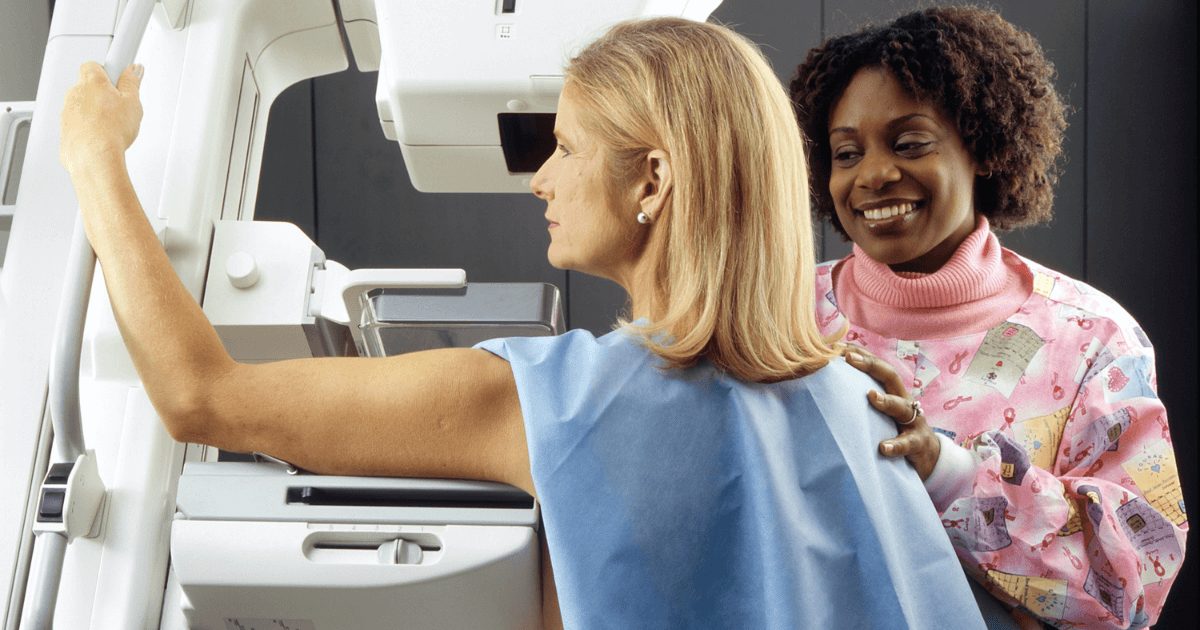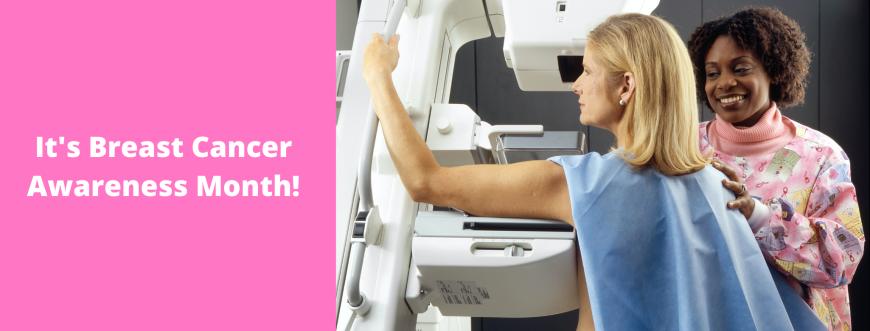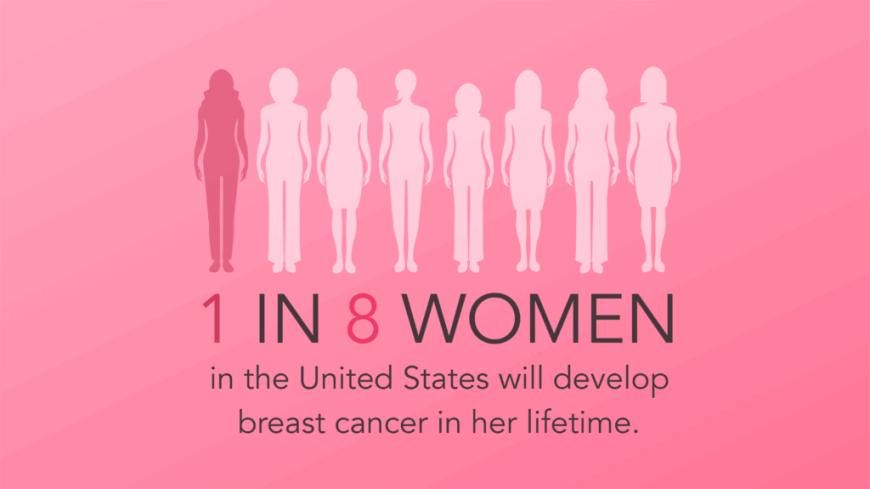
Post Contents [hide]


Did you know October is Breast Cancer Awareness Month? You may have noticed the pink ribbons and have already had conversations with your loved ones about the disease. If you haven’t, don’t worry! It’s never too late to increase awareness and better your understanding of breast cancer. The Med Mart team is here to contribute some information and advice on the topic, as well as share a few ways to support patients and survivors.
The Facts
According to the CDC, breast cancer is the second most common cancer, after skin cancer, contracted by women in the United States. Over 12% of women will develop breast cancer in their lifetime. Each year, over 250,000 Americans are diagnosed with breast cancer. This sometimes fatal disease can also affect men, but only about 1% of cases are found in males. The biggest factors that affect your risk of developing breast cancer are unfortunately gender and age. The majority of breast cancers diagnosed in the United States are found in women over the age of 50.
Thanks to medical research and innovation, the mortality rates for breast cancer patients are much smaller than what they were even 30 years ago. Sadly, around 40,000 women still succumb to the disease every year. There are countless organizations working to raise money to support survivors, current patients, and further research into the disease.


Know the Signs & Symptoms
A monthly breast self-exam can expose the early signs of breast cancer. If you feel pain in any area of your breast, feel a new lump in your breast or underarm area, or experience nipple discharge other than breast milk, you should reach out to your medical provider. You may also need further testing if there are any changes in the color or texture of your skin in the area around your breast. Early detection can sometimes lead to a greatly improved outcome, so make sure to take the time for a breast self-exam every month. It is also important to receive a clinical breast exam from your physician annually, as they may be able to detect a symptom of breast cancer that you may have missed. Click here to find a mammography facility near you, and watch the video below as Laura Kruper, M.D. explains what symptoms to look for during your monthly breast self-exam.
It's recommended that women over the age of 40 visit their healthcare provider for a mammogram every two years until they reach the age of 75, but we recommend talking with your medical team about how often you should schedule mammograms. Some women have risk factors that they don’t even know are related to breast cancer, and may be asked to come in more frequently. Mammograms can expose much smaller tumors than a breast exam, and thus lead to earlier detection of the disease. As your risk increases at the age of 50, it is important to monitor breast tissue to catch any cancerous growth as early as possible. While some women find mammograms uncomfortable, the test greatly reduces the likelihood of a small tumor going undetected. Learn more about the importance of mammograms in the video below by the American College of Radiology.
Reduce Your Risk
While the suggestions below from the CDC may greatly reduce your risk of developing breast cancer, there is no proven method of completely avoiding the disease. However, being aware of the symptoms and taking steps to make sure your immune system is running at 100% can significantly lower your risk of getting breast cancer.
- Exercise regularly and maintain a healthy weight. Studies have shown that even 30 minutes of exercise a day can help to boost your immune system and reduce your risk of developing cancer.
- Limit the amount of alcohol you drink, or even cut it out of your diet entirely. Limiting your alcohol consumption to 2 drinks or less per week is highly recommended.
- Talk to your doctor about your personal level of risk. You may be at a higher (or lower) risk due to genetic mutations, taking hormone replacement therapy or birth control pills, and your reproductive history.
Raise Awareness & Get Involved
If you want to get involved, there are many organizations that are constantly looking for volunteers. National Breast Cancer Foundation, Making Strides Against Breast Cancer, and American Cancer Society’s Road to Recovery Program are all fantastic initiatives that rely on volunteers for support. You can also donate to groups like the Breast Cancer Research Foundation, Metavivor, or Living Beyond Breast Cancer, to help fund research, support groups, treatments, and more.
We currently offer two products on our site for which part of the proceeds are donated to the National Breast Cancer Foundation or to the American Cancer Society. While we would much rather you make a direct donation to the initiative of your choosing, we hope that offering these eye-catching pink products can help lead to increased awareness about breast cancer. The first is the Universal Seat Height Aluminum Rollator in Pink. This adjustable height rollator will provide you with support and comfort , whether you are going for a stroll or need to stop and rest. The zippered pouch and backrest both feature a pink ribbon in honor of the famous ACS Pink Ribbon campaign. We also offer a Pink NBCF Support Head Pillow made by Golden. Part of the proceeds from this bright pink pillow will go to the National Breast Cancer Foundation to increase education about the disease and to provide free mammograms to women in need.
You can directly help of the women in your life by educating yourself about breast cancer and providing others with support. Breast Cancer Awareness Month is every October, but we hope to encourage education and support all year long.